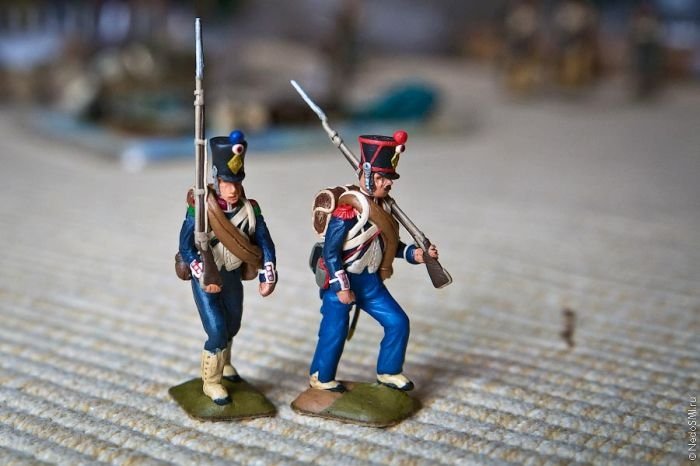|
|
Plastic Toy Army
|
The first American plastic toy soldiers were made by Bergen Toy & Novelty Co. (Beton for short) in 1938. Beton also acquired the moulds of another pre-war plastic figure company, Universal Plastics with their figures remaining for sale when lead toy production was stopped in 1942. The Beton figures were painted like metal figures and sold the same as their metal brethren; individually or in a boxed set of around seven figures. Following World War II, Beton modified their figures in an attempt to change the World War I type helmet into the World War II one.
Following World War II, plastic manufacture was seen as an industry with growth potential with many old and new companies making plastic figures that were widely available in the United States. Army men following the war were sold unpainted, usually in a green colour corresponding to United States Army uniforms in World War II and reflecting camouflage face painting. Though some were sold individually where they were cheaper than metal figures whose price had skyrocketed due to the Korean War, the plastic figures were sold en masse in clear plastic bags with an illustrated header card in different sizes and prices since the early 1950s. A popular early manufacturer of army men, was Louis Marx and Company who sold boxed sets of figurers and accessories called playsets, such as in "US Army Training Centre" and the later "Battleground". A rival manufacturer, the Multiple Plastics Corporation (MPC) originally sold plastic figures in various colours with different separate accessories, so the same figures could be kitted out as soldiers (green), farmers, pioneers or cowboys (brown), policemen (blue), ski troopers (white) spacemen (various colours) or American Civil War soldiers in Blue and Grey.
From 1962 Marx gave the American "armymen" actual enemy soldiers to fight such as German soldiers (moulded in grey) in their "Army Combat" set and Japanese enemies (moulded in yellow) in their "Iwo Jima" set that was released the following year. In 1965, a "D-Day" Marx set featured Allies such as French (horizon blue), British (khaki) and Russians. One of their last and largest playsets was the multi-level "Fortress Navarone" mountain set based on The Guns of Navarone, which was available in the 1970s and pitted World War II Americans against Germans.
The economy of plastic sold in bulk, popularity of army men and competition with manufacturers led to army men being sold in large bags by Marx (100) and MPC (150 in two armies) for as little as a penny a piece in the mid 1960s.
|
|









